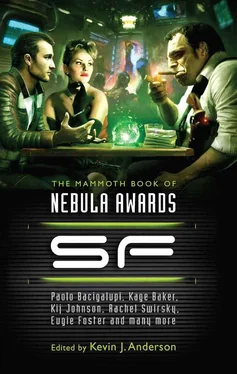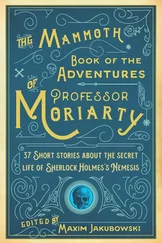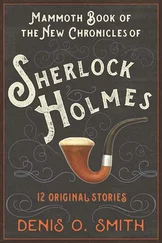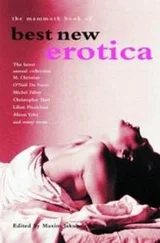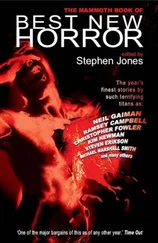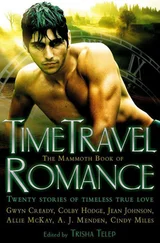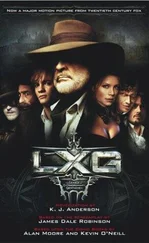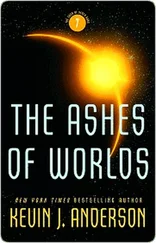THE MAMMOTH BOOK OF NEBULA AWARDS SF
Edited by Kevin J. Anderson
INTRODUCTION
Kevin J. Anderson

For forty-five years, the members of the Science Fiction and Fantasy Writers of America (SFWA) have been reading, pondering, dickering over, and selecting the most exceptional works in the genre. Each year, they present the prestigious Nebula Award for Best Novel, Novella (17,500-40,000 words), Novelette (7,500-17,500 words), and Short Story (less than 7,500 words). The first ceremonies, in 1965, honored works by Frank Herbert, Brian W. Aldiss, Roger Zelazny, and Harlan Ellison. Not a bad start.
Throughout each year, the fifteen hundred or so members of SFWA send in recommendations to call attention to works they find worthy of consideration. If a story or novel receives enough recommendations within a year of publication, the work is included on that year’s Preliminary Ballot. The full members of SFWA vote on the shortlisted works to winnow them down to four candidates in each category (a special jury can also add works that they feel slipped through the cracks), and that’s the final Nebula ballot, from which the winners are chosen.
Hence, the contents of this Showcase .
The genre’s rival award, the Hugo, is chosen by the readers and fans, the equivalent of the People’s Choice Awards. The Hugo and Nebula audiences’ tastes don’t always agree, but both awards are an impressive feather in an author’s cap. For me, the final ballots serve another vital purpose: providing SF and fantasy readers with a cream-of-the-crop reading list.
When I grew up as a kid in small-town Wisconsin, with a whole section of the public library devoted to science fiction (as denoted by little rocket stickers on the spines), it was hard to know where to start. The section was daunting and huge — six whole shelves filled with science fiction books! I could have begun at the top and worked my way down, which would have made me very familiar with Asimov, Bradbury, and Clarke, but I would never have made it to Zelazny. Obviously, not a good system.
Instead, I turned to the Nebula Awards anthologies for a selection of each year’s best work; from there, with a checklist of past Nebula novel winners, I was steered toward such masterpieces as Ringworld, The Forever War, Rendezvous with Rama, Man Plus, Gateway, Stardance , and many others. I studied the works, learned from them, and (most of all) enjoyed them.
By age twelve I was already an aspiring writer sending stories out in the mail, and starting my pile of rejection slips. My interest in writing did not go unnoticed, and teachers began to encourage me. I got connected with a local book-review service and found myself with as many free novels as I could read, so long as I turned in reviews afterward. (I was only fifteen at the time, and “book review” felt more like a “book report.”) The book review editor encouraged me to attend a local science fiction convention in Madison, Wisconsin — WisCon. He even loaned me the $15 membership fee. That was where I met my very first real-live New York editor, David Hartwell. I was just a high-school kid, too shy to talk much, and I wondered if all professional editors wore such strange neckties. (Hartwell, by the way, is also Tor’s editor for this very book, and we have worked together on other projects as well.)
After graduating from the University of Wisconsin, I moved away from the Midwest — still wanting to be an author — and took a job in the San Francisco area as a technical writer for a large research laboratory. There I discovered a much wider world of fandom, other like-minded aspiring authors, writers’ workshops, and frequent conventions. I attended my first Nebula Awards ceremony in 1985 at the swanky Claremont Hotel in Oakland, California (nobody told me I wasn’t supposed to wear my battered Star Wars T-shirt), where I watched Orson Scott Card receive the Nebula for Ender’s Game .
I published my first professional stories, sold my first novel, then three more novels, joined SFWA as a full member — and suddenly authors and publishers began sending me novels and stories to consider for the Nebula Award. Instead of just looking at each year’s nominees and winners as a list of good fiction to read, I could cast my vote, add my recommendation to books and stories that I found particularly noteworthy. It was a heady responsibility (and a tough task for a relatively slow reader). Just keeping up with all the best writing was nearly impossible.
Each year’s Nebula Awards Showcase certainly helps.
Tastes and styles have changed over the years, but the works that are recommended and nominated by SFWA members always form a melting pot of science fiction and fantasy: bold ideas, excellent world-building, clear and precise prose, or mind-bending experimental writing — the whole gamut.
This volume is no different. Reading these stories, you will find a wide range of colorful fantasy, experimental speculative fiction, steampunk, edgy near-mainstream, and hard SF. The tales will take you from the distant past, to a skewed modern day, to the far future, as well as to sideways points in between. Tor Books has generously allowed us the space to include not only the winning works in the three short-form categories, but also all of the nominees in the Novelette and Short Story categories. I guarantee that you’ll love something here.
Let the Science Fiction and Fantasy Writers of America show you our best.
FINAL 2009 NEBULA BALLOT

Short Story
“Hooves and the Hovel of Abdel Jameela,” Saladin Ahmed ( Clockwork Phoenix 2 , Norilana Books, July 2009)
“I Remember the Future,” Michael A. Burstein ( I Remember the Future , Apex Publications, November 2008)
“Non-Zero Probabilities,” N. K. Jemisin ( Clarkesworld , November 2009)
“Spar,” Kij Johnson ( Clarkesworld , October 2009)
“Going Deep,” James Patrick Kelly ( Asimov’s Science Fiction , June 2009)
“Bridesicle,” Will McIntosh ( Asimov’s Science Fiction , January 2009)
Novelette
“The Gambler,” Paolo Bacigalupi ( Fast Forward 2 , Pyr Books, October 2008)
“Vinegar Peace (or, the Wrong-Way, Used-Adult Orphanage),” Michael Bishop ( Asimov’s Science Fiction , July 2008)
“I Needs Must Part, the Policeman Said,” Richard Bowes ( The Magazine of Fantasy & Science Fiction , December 2009)
“Sinner, Baker, Fabulist, Priest; Red Mask, Black Mask, Gentleman, Beast,” Eugie Foster ( Interzone , February 2009)
“Divining Light,” Ted Kosmatka ( Asimov’s Science Fiction , August 2008)
“A Memory of Wind,” Rachel Swirsky (Tor.com, November 2009)
Novella
The Women of Nell Gwynne’s , Kage Baker (Subterranean Press, June 2009)
Arkfall , Carolyn Ives Gilman ( The Magazine of Fantasy & Science Fiction , September 2009)
Act One , Nancy Kress ( Asimov’s Science Fiction , March 2009)
Shambling Towards Hiroshima , James Morrow (Tachyon, February 2009)
Sublimation Angels , Jason Sanford ( Interzone , October 2009)
The God Engines , John Scalzi ( Subterranean Press, December 2009)
Читать дальше
